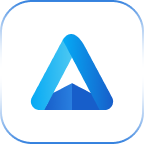
Finding the right OKR cadence

Rather watch a video? Scroll down!
An OKR program is built on a mix of processes and functions that ensure that the entire organization is pulling in the same direction. One of the most tricky parts of designing an OKR program is finding a cadence that works best for your organization and teams — it’s really a matter of trial and error!
What is a cadence? Cadences set the frequency with which the organization and its respective teams set and review their OKRs. Typically, OKR programs are most successful when they operate on a combination of cadences. These cadences interact with each other to create a rhythm of continuous and focused progress.
Having helped thousands of organizations set up robust OKR programs, and through our own experience, we’ve learned that the combination of annual and quarterly cadences is most beneficial. The purpose behind such a combination is to set a high-level goal with a longer horizon that is accomplished by working on smaller goals with a shorter horizon.
Are you just getting started with designing your OKR program? Here’s a template for you to create the perfect OKR program for your organization.
Why have a longer cadence?
Most organizations have a strategy — their guiding light for everything they do. While strategy is an organization’s beacon in the long run, it’s often too broad to be broken down into actionable goals effectively.
That’s where OKRs set on longer cadences come in. At the beginning of a cycle, executives should closely reflect on strategy and define the organization and/or departments’ focus and priorities for a given period of time — typically a year, or at times even 3 years. Such OKRs communicate the core themes that the organization or departments want to achieve by the end of the given timeframe.
Since teams are at the forefront of driving execution, our coaches recommend that execs gather team’s and individual’s input when setting these long-term OKRs. Their insights are invaluable to ensure that the organization focuses on the right areas.
Example
One of Perdoo’s annual Objectives for 2021: Deliver a scalable but personal experience
Why have a shorter cadence?
Shorter cadences are typically where teams and departments drive execution — supporting and delivering the higher-level priorities set by the organization. Such cadences can be set in various ways: quarterly, 6-weeks, or even monthly depending on your needs.
Ultimately, the human brain prioritizes instant gratification. Breaking larger, more daunting goals into smaller, more manageable goals helps teams stay on track. Short cadences keep teams agile, creative, and motivated. Want our take? Quarterly OKRs provide teams with the perfect amount of time to meaningfully impact metrics but also course-correct where needed.
Example
Here are three Objectives for Q3 2021 aligned to Perdoo’s annual Objective for 2021 “Deliver a scalable but personal experience”:
- Customer success: Make our support self-serve
- Product: Create a seamless onboarding experience
- Sales: Provide the optimum demo experience
Finding a rhythm that works for you
It’s important to note that the OKR framework is flexible and forgiving — there’s no hard and fast rule on setting the right cadence for your organization. It’s a matter of starting simple and modifying the process as you iterate, and learn.
Short cadences
For pretty much all organizations, a short cadence is a no-brainer. Indeed, working in these more agile cycles is a key reason why many organizations choose to work with OKRs in the first place.
Here are the key benefits:
- Keep on top of shifting priorities in uncertain operating environments, eg start-ups.
- Remain agile with enough time to reflect and learn.
- Create a sense of urgency so teams continue to drive progress on these priorities.
It’s important to note though that shorter cadences (ie. monthly), may create unwanted overhead as goal-setting and reflection takes time away from actually achieving goals. Just like Individual OKRs.
Longer cadences
For more established companies, with less uncertainty, a longer cadence for company goals could be a better option. Don’t forget! You still need to keep things agile, so balance it out with a shorter cadence at the team or department level. We’d also recommend keeping cadences consistent across teams or departments to ensure dependencies are coordinated and aligned.
Another option is having a longer cadence at the company level, and then having a fluid cadence for teams and departments. They’re then free to create OKRs to support the company-level OKR (annual, 3-year) as and when it’s needed.
Conclusion
Finding the right cadence is an iterative process. The annual and quarterly combination works for most organizations and, to keep things simple, we recommend you start there. Remember, this is not set in stone. At the end of each quarter, discuss the experience, identify learnings, and make necessary adjustments to find cadences that work for you.
In Perdoo, we provide you with complete flexibility to configure your cadences to fit your organization’s rhythm. Add or remove cadences (eg for 3-year, annual, and quarterly). Alter start dates, eg for fiscal years. And tailor your rhythm to grow with you.
Watch video
FAQ
Continue reading...


Why you shouldn’t outsource OKR to HR


How to embed goals in performance reviews







